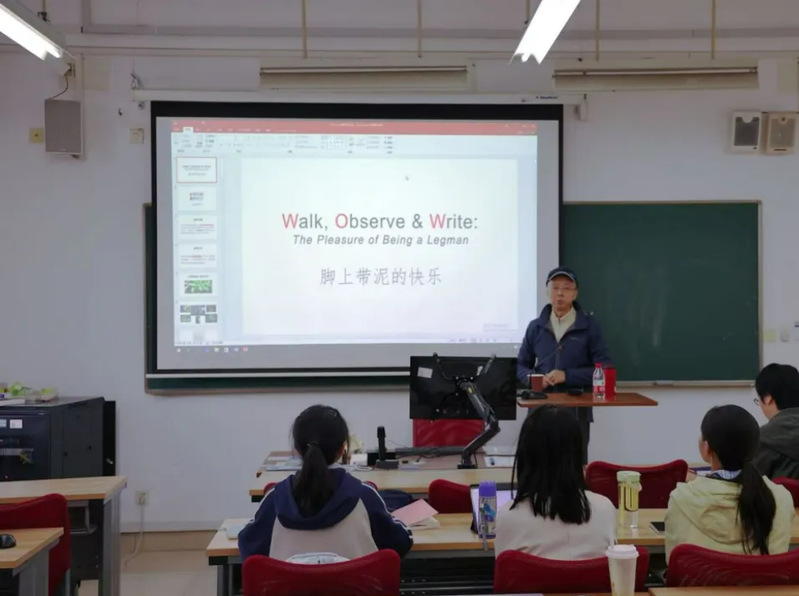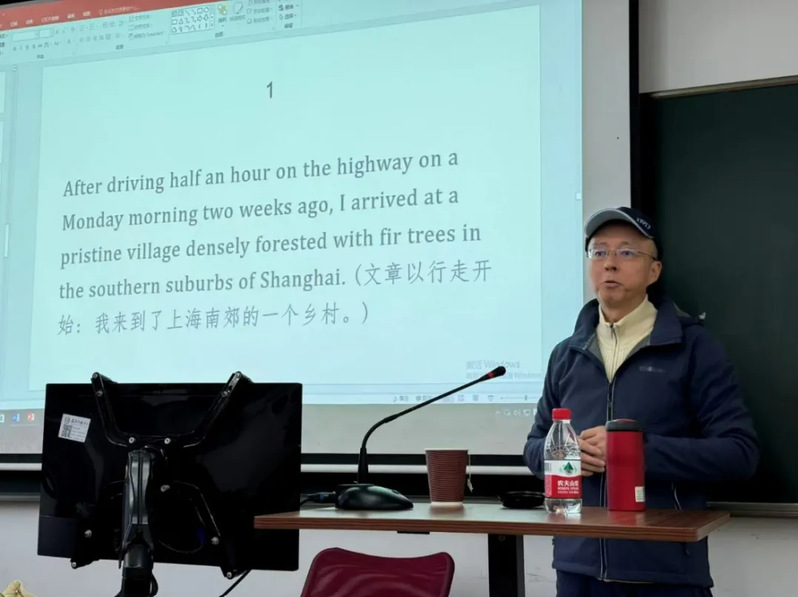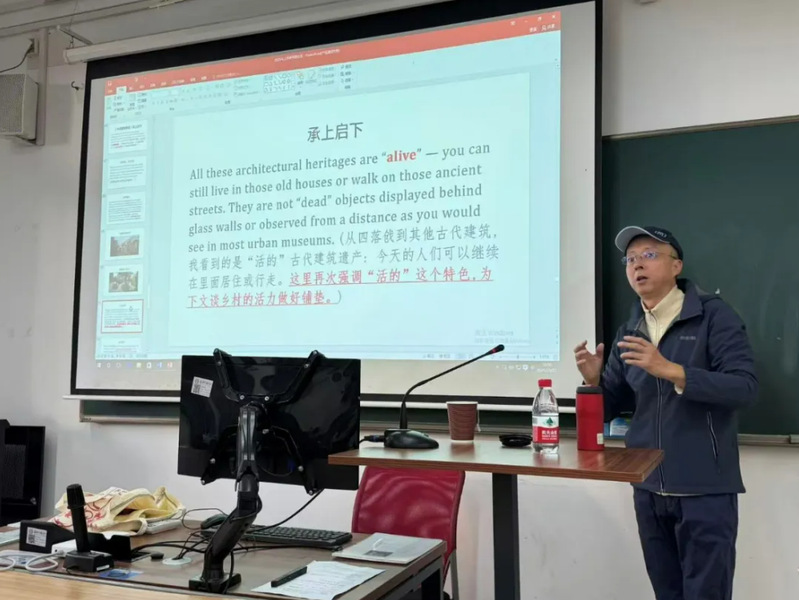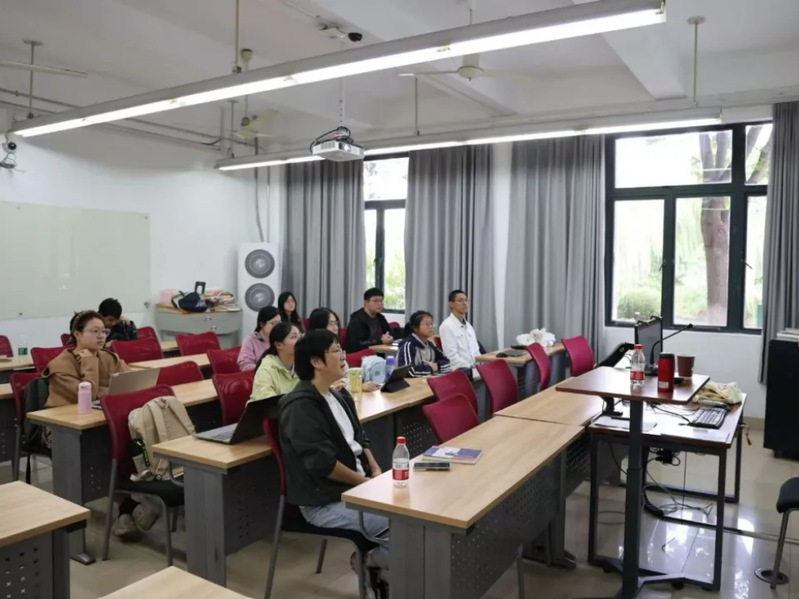



By Ma Yihan
Translated by Guo Yishun
On October 23, Wang Yong, Senior Editor and Chief Commentator at Shanghai Daily, delivered a guest lecture titled “Walk, Observe and Write: The Pleasure of Being a Legman” to students of the School of Journalism and Communication at Shanghai International Studies University. The session explored the relationship between fieldwork, observation, and critical writing in journalism.
At the beginning of the lecture, Wang emphasized that authentic news commentary should be grounded in first-hand experience rather than secondary sources. He said that field reporting enables journalists to capture the complexity and authenticity of real-life situations, which in turn strengthens the credibility and depth of commentary writing. Drawing on over thirty years of professional experience in both national and international media, he summarized his approach as “using one’s feet to find facts and one’s mind to form ideas.”
Wang illustrated this approach with two reporting examples. During a field trip to Wuyi Mountain, he observed the natural growth of wild tea trees and clean spring water, which prompted him to reexamine the perception of Shanghai as a “plant desert.” To explore this question, he conducted field research in different parts of Shanghai, walking miles in the heat of the sun, examining vegetation along subway lines and identifying species such as Paederia scandens and Fagopyrum dibotrys. His on-site observations provided the empirical basis for a commentary titled “Secret Gardens Beside the Metro,” which revealed the ecological richness often overlooked in urban settings.
In another example, while preparing the article “The Countryside Is a Museum,” Wang found that existing online materials offered limited perspectives. He therefore visited Dongqin Village in Songjiang District. There, the architectural design of a century-old residence inspired his analysis of the village as a “living architectural museum.” These wandering experiences, he said, demonstrate that direct engagement with the field allows journalists to generate original insights and avoid repetitive narratives.
Based on his fieldwork experiences, Wang summarized what he described as the logic of “walking commentary,” consisting of three key elements: walking to the scene to access first-hand information, observing specific details as evidence, and associating these details with broader social or cultural meanings. According to him, these practices form the foundation of effective news commentary and represent the value of field investigation in contemporary journalism.
Wang’s lecture emphasized that the core of journalism lies in empirical observation and field-based inquiry. By integrating reporting, observation, and reflection, journalists can produce commentary that is both factual and insightful.
The lecture reinforced SJC’s emphasis on practice-oriented teaching and the belief that journalism education must extend beyond the classroom. By walking into real-life contexts, aspiring journalists can strengthen their critical thinking, creativity, and analytical depth.
The lecture is hosted by Lin Yan, director of the SJC’s journalism program.


 |Hongkou Campus|550 Dalian Road (W), Shanghai 200083, China |Songjiang Campus|1550 Wenxiang Road, Shanghai 201620, China
|Hongkou Campus|550 Dalian Road (W), Shanghai 200083, China |Songjiang Campus|1550 Wenxiang Road, Shanghai 201620, China